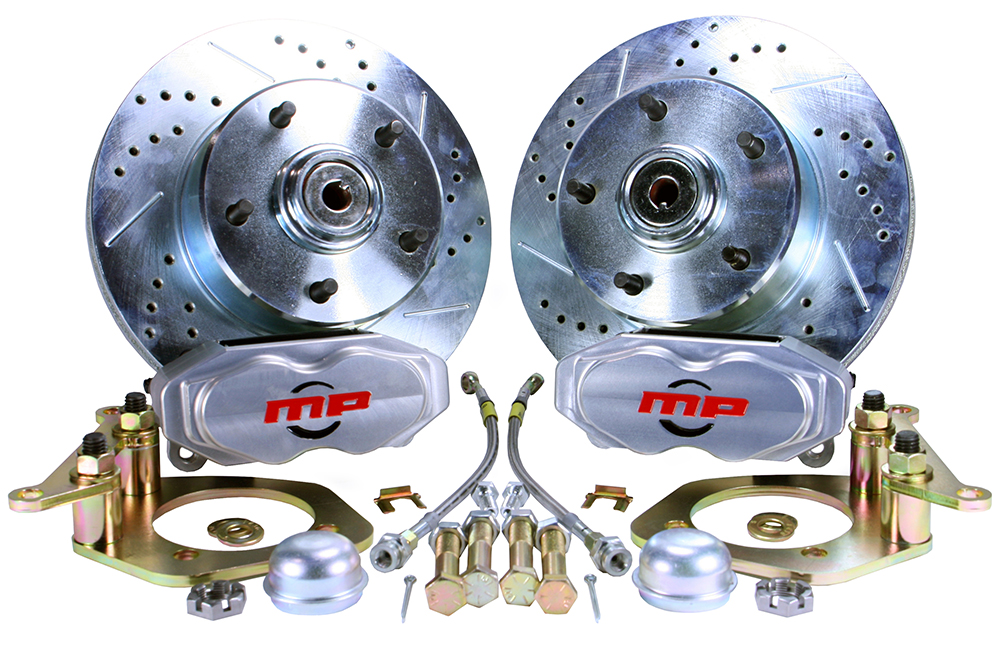Most of our customers own cars that came with drum brakes as original equipment, and sooner or later, they need to make a decision about upgrading to disc brake technology. If you own a very rare, museum quality classic car that is 100% original, you can make a reasonable case for leaving things alone.

That said, most of us are not driving factory original classics, and there are certain areas of the typical daily driver (e.g., air conditioning, suspension, brakes) that merit upgrades. You probably understand disc brake systems are safer and more efficient than drums, but do you know why? And, assuming you are looking for a disc brake conversion kit, should you upgrade the front and rear, or the front end only?
To truly understand the difference between disc and drum brake systems, we need to understand the forces that stop your car—friction and heat. The brake system applies friction or resistance, which in turn slows your wheels and brings the vehicle to an eventual stop. The byproduct of this action is heat.
The effectiveness of any brake system depends on a number of factors including the weight of the car, braking force, and total braking surface area. You also have to factor in how efficiently the system converts wheel motion into heat (via friction) and how efficiently the built-up heat is removed from the brake system. This last point, the build-up, and dissipation of heat go a long way toward explaining the key differences between drum and disc brake technology.
The build-up and dissipation of heat illustrate the major drawback of drum brakes. If you ride the brakes hard (e.g., steep hills, heavy traffic, emergency stops), the brakes begin to fade due to excessive heat build-up within the drum. As we just mentioned, the braking principle involves converting kinetic energy (the movement of a wheel) into heat. During this process, the drum is busy absorbing heat to stop your car. Problems arise when the drum reaches a saturation point and can’t absorb additional heat. This scenario explains the science behind brake fade. Disc brake systems also use friction and heat to stop a car, but with these systems, the rotors used are exposed to outside air, which creates a cooling effect that combats fade.
The next obvious question is should I convert all four wheels to disc brake technology or just the front end? The answer depends on budget and how you intend to drive the car. Remember, weight is shifted forward while braking, which means the front end of the system is responsible for creating more stopping power. It is also important to point out that modern-era drum brake systems offer more performance than their earlier counterparts.
This is why some of our customers opt for disc technology for the front, and our improved drum brake kits for the rear end. For the average daily driver, a disc-drum configuration is less expensive and provides ample stopping power. If you are an aggressive driver, or your car sees some track use, disc brake technology for all four wheels is a good play. A complete disc brake upgrade kit comes with a higher bar tab, but the improved performance will justify the additional cost.
There is always much to consider when making significant changes to a classic car, and this is especially the case when you are dealing with important safety systems like brakes. If you have questions or want o discuss the best make/model/year specific brake options for your classic car, give us a call or drop us a line and we’ll be glad to help.

